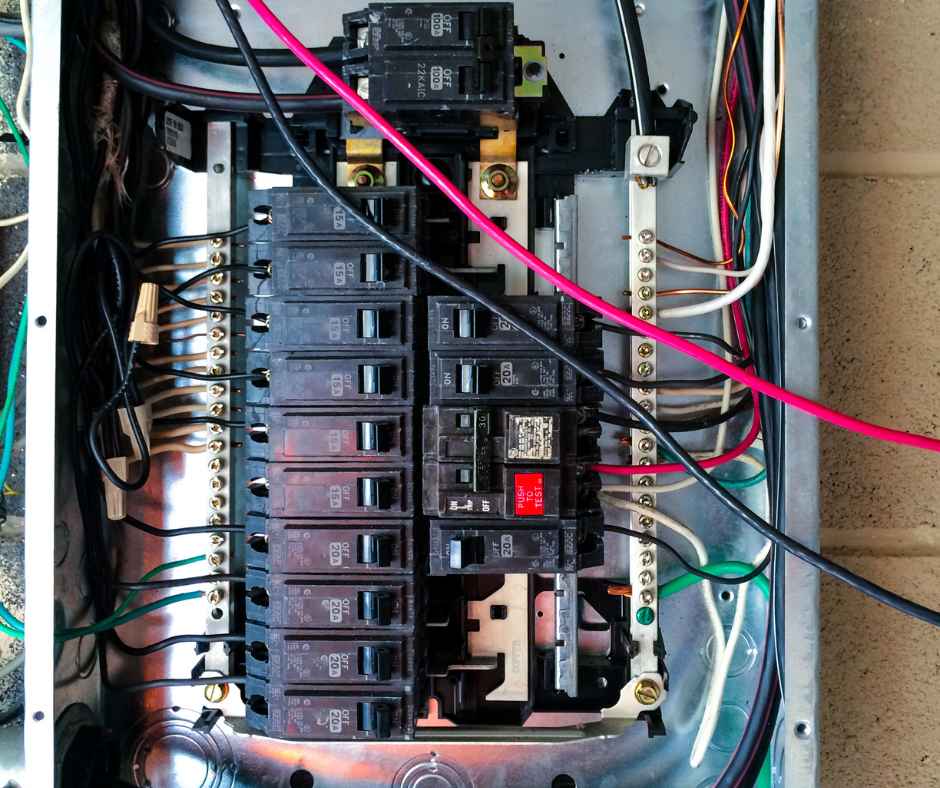Serving Colorado Springs & Surrounding Areas
Electrical Safety Inspection: Would Your House Pass?
Electricity is deeply intertwined in our day-to-day activities. Whether you are blow-drying your hair, cooking a meal, or even reading this article online, you count on electricity for important activities in your home. It’s crucial to know that all your power outlets and appliances are in good working order so that your schedule goes uninterrupted. Additionally, maintaining reliable appliances reduces the risk of a devastating electrical fire.
Gain confidence and peace of mind by scheduling an electrical safety inspection with The WireNut. We recommend a safety inspection if any of the following conditions apply to you:
- You are purchasing a new or pre-owned home
- Your current home is over 40 years old
- You are installing a new electrical appliance
- You are renovating or have recently renovated your home
Here’s a quick look at what exactly is required to pass an electrical safety inspection.
General Safety Points
Any one of the following issues could cause you to fail an electrical safety inspection:
- Outdated knob and tube wiring
- Missing or broken carbon monoxide detectors
- Missing or broken smoke alarms
- Mismatched age of lighting and wiring (new lights installed with old wiring)
- Overcrowded or congested wires
- Non-IC-rated recessed lighting fixtures that meet attic insulation
- Illegally spliced wiring
Now, let’s go room by room to determine what is needed to pass the safety inspection.
Restroom
To pass the electrical safety inspection, each restroom must meet the following criteria:
- A combination fan/light/heater must have its own 20-amp circuit
- Outlets must all be ground fault circuit interrupters (GFCI protected outlets)
- Lighting near the shower or bathtub area must be moisture resistant and be covered with a lens
Kitchen
The various safety requirements for your kitchen are as follows:
- Every motorized appliance must have its own circuit
– Microwave, Dishwasher, Garbage Disposal, Refrigerator
- An electric range, cooktop, or oven must have its own dedicated 240-volt circuit
- At least two receptacle circuits must be installed above the countertop
Laundry Room
To meet the standards of the safety inspection, your laundry room must meet the following criteria:
- An electric dryer must have its own 240-volt circuit
- Both the washer and dryer must be connected to their own 20-amp receptacle
Dining, Living & Bedrooms
You typically won’t find large appliances in these rooms, but there are electrical codes to comply with:
- Every room must have a wall switch installed adjacent to the entry door that controls either a ceiling light, sconce light, or outlet for a lamp.
- Ceiling fixtures must be controlled by a wall switch, instead of a pull chain
- Outlets must be installed within 12 feet of each other
Staircases & Hallways
Since they serve as escape routes in the event of a fire or other emergency, there are specific electrical codes that apply to these areas of the home:
- Ample lighting is required to prevent casting a prohibitive shadow
- Hallways greater than 10 feet in length must include an electrical outlet
- Three-way switches must be included at the top and bottom of staircases
- Three-way switches must be included at both ends of hallways
- If the staircase corridor turns, additional lighting is required to light the area
Attached Garage
An attached garage is considered an extension of your home, and it must meet the following electrical safety requirements:
- A minimum of one wall switch must control lighting in the garage (this is in addition to the light on the garage door opener)
- Three-way switches must be installed on the side door, and doors leading to the garage
- A minimum of one GFCI outlet must be installed inside the garage on its own circuit




